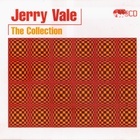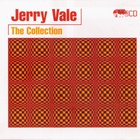Jerry Vale

- Genre:
- Vocal
- Meta styles:
- Traditional Pop, Vocal Pop
Jerry Vale's beautiful high-tenor voice graced many of the most enchanting pop songs of the '50s and '60s, including a parade of Italian-American favorites like "Innamorata (Sweetheart)," "Volare," "Amore, Scusami," and his signature song, "Al Di La." Vale, born Genaro Louis Vitaliano in 1932, learned the Italian repertoire from an early age; his mother often sang around the house and trotted out the old songs at extended-family gatherings. While shining shoes at a local barber shop at the age of 11, young Vitaliano began singing popular songs for customers while he worked.
He was soon sent to a vocal coach, where he learned piano as well as voice. Over the course of just four years, he'd progressed from school productions to paying gigs to residencies at supper clubs around New York City.
After Guy Mitchell caught his set at one club, Jerry Vale began recording demonstration discs for Columbia. When A&R supremo Mitch Miller heard his excellent voice, however, he signed Vale to his own contract. Vale first hit the charts in 1953 with "You Can Never Give Me Back My Heart" (arranged by Percy Faith), and continued during the mid '50s with "Two Purple Shadows," "I Live Each Day," and his biggest hit, "You Don't Know Me." Though his first explicitly Italian recording, "Innamorata (Sweetheart)," finally appeared in 1956, it wasn't until 1962 that Vale convinced the notoriously conservative Miller to record a full album of Italian songs. "I Have But One Heart" proved a big seller and was followed one year later by "Arrivederci, Roma" and a continental LP, "The Language of Love," both of which placed even higher than the first on the album charts.
Though the mid '60s were a trying time for traditional pop singers, Vale continued to be successful, with singles like "Have You Looked Into Your Heart" and "For Mama," and Top 40 LPs like "There Goes My Heart" and "It's Magic." Even after his albums began failing to make the charts in the early '70s, Vale remained a popular name in clubs and on television throughout the '70s and '80s. ~ John Bush, All Music Guide
- Sort by

The Collection CD3
- Year:
- 2004
- Tracks:
- 20
- Bitrate:
- 320 kbps

The Collection CD2
- Year:
- 2004
- Tracks:
- 20
- Bitrate:
- 320 kbps

The Collection CD1
- Year:
- 2004
- Tracks:
- 20
- Bitrate:
- 320 kbps

Be My Love / Have You Looked Into Your Heart
- Year:
- 2000
- Tracks:
- 24
- Bitrate:
- 200 kbps

Greatest Hits
- Year:
- 1998
- Tracks:
- 16
- Bitrate:
- 192 kbps

Sings The Great Italian Hits
- Year:
- 1998
- Tracks:
- 18
- Bitrate:
- 320 kbps

Love Me The Way I Love You
- Year:
- 1995
- Tracks:
- 12
- Bitrate:
- 320 kbps

We've Only Just Begun (Vinyl)
- Year:
- 1969
- Tracks:
- 11
- Bitrate:
- 320 kbps

The Impossible Dream (Vinyl)
- Year:
- 1966
- Tracks:
- 11
- Bitrate:
- 320 kbps

Sings Everybody Loves Somebody And Other Hits (Vinyl)
- Year:
- 1966
- Tracks:
- 11
- Bitrate:
- 320 kbps
 Al Martino 11
Al Martino 11 Dean Martin 81
Dean Martin 81 Lou Monte 4
Lou Monte 4 Tony Bennett 88
Tony Bennett 88 Vic Damone 13
Vic Damone 13 Frank Sinatra 281
Frank Sinatra 281 Frankie Laine 28
Frankie Laine 28 Jack Jones 34
Jack Jones 34 Vaughn Monroe 2
Vaughn Monroe 2 Dick Haymes 8
Dick Haymes 8 Eddie Fisher 4
Eddie Fisher 4 Engelbert Humperdinck 67
Engelbert Humperdinck 67 Matt Monro 13
Matt Monro 13 Mel Torme 42
Mel Torme 42 Pat Boone 33
Pat Boone 33 Steve Lawrence 23
Steve Lawrence 23 Wayne Newton 10
Wayne Newton 10 Robert Goulet 24
Robert Goulet 24 Andy Williams 78
Andy Williams 78 Bing Crosby 36
Bing Crosby 36 Perry Como 27
Perry Como 27 Richard Harris 4
Richard Harris 4 Sammy Davis Jr. 18
Sammy Davis Jr. 18